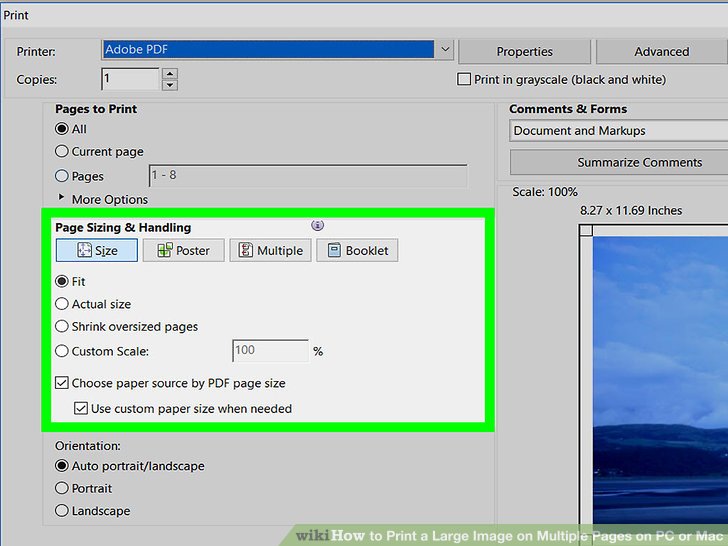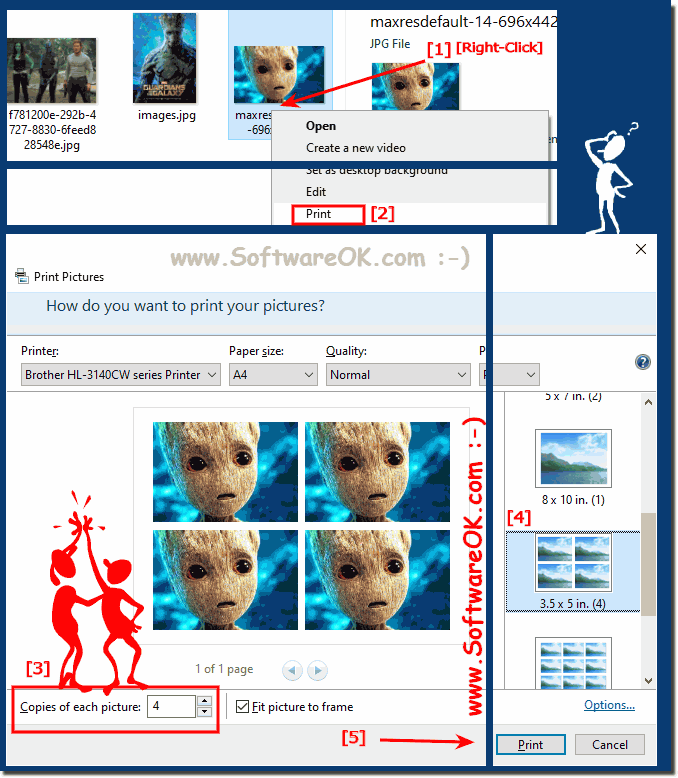Print Your Photo Across Multiple Pages

Have you ever wanted to create a large-scale print of your favorite photograph but were limited by the size of standard paper? The solution lies in a technique known as "printing across multiple pages," which allows you to break down an image into individual segments and then reassemble them to create a stunning panoramic print. This method opens up exciting possibilities for displaying your photos in unique and eye-catching ways.
The Art of Photo Stitching

Photo stitching, or printing across multiple pages, is a creative process that transforms your digital images into physical, oversized prints. By dividing your photo into a grid and printing each grid segment on a separate sheet of paper, you can then carefully align and join these segments to recreate the original image on a much larger scale.
The Benefits of Multi-Page Printing
This technique offers several advantages for photographers and enthusiasts alike. Firstly, it allows you to showcase your photography skills on a grand scale, making a bold statement with your images. Secondly, it provides an affordable alternative to professional large-format printing, as you can use standard-sized paper and printers to create impressive results.
Additionally, printing across multiple pages encourages creativity. You can experiment with different paper sizes, orientations, and layouts to achieve unique effects. Whether you want to create a seamless panoramic view or deliberately introduce interesting borders and overlaps, the possibilities are endless.
Getting Started: Choosing the Right Image
Not all photos are suitable for multi-page printing. Landscapes, cityscapes, and panoramic shots often lend themselves well to this technique, as they can be naturally divided into sections without losing context. However, you can also apply creative thinking to portrait or macro photography, experimenting with different crops and compositions to achieve interesting results.
| Image Type | Suitability |
|---|---|
| Landscapes | Highly Suitable |
| Cityscapes | Excellent |
| Portraits | Requires Creative Approach |
| Macro/Close-up | Potential for Creative Interpretation |

Consider the following factors when selecting an image:
- Image resolution: Ensure your photo has a high enough resolution to maintain quality when enlarged.
- Composition: Look for images with a strong visual flow or natural divisions that can guide your segmentation.
- Color and lighting: Consistent color and lighting across the image will make stitching easier and more effective.
The Process: Step-by-Step Guide
Printing across multiple pages involves several steps, from preparing your image to the final assembly. Here's a detailed guide to help you through the process:
Step 1: Prepare Your Image
Using photo editing software, such as Adobe Photoshop or GIMP, open your chosen image and determine the desired print size. Calculate the number of pages needed by dividing the print width and height by the paper size you intend to use. This will give you the number of segments and the size of each segment.
Next, create a new document with the size of a single segment. Copy and paste your image into this document, ensuring it fills the entire canvas. Save this as a new file, and repeat the process for each segment.
Step 2: Print and Mark Your Segments
Print each segment on the chosen paper type, ensuring high-quality settings for the best results. Once printed, carefully trim the edges of each page to remove any white borders. Use a ruler and a sharp knife or scissors for precision.
To facilitate alignment during assembly, mark each segment with small dots or crosses at the edges, ensuring these marks are visible but subtle. These marks will guide you in lining up the segments accurately.
Step 3: Assemble Your Print
Start by laying out all the segments on a large, flat surface, arranging them according to their position in the grid. Use your marked dots or crosses to guide the alignment. Once you’re satisfied with the arrangement, begin joining the segments together using double-sided tape or a spray adhesive.
For best results, work from the center outwards, ensuring each segment is perfectly aligned before attaching it. Take your time and be meticulous to avoid any misalignments that could detract from the final print.
Step 4: Finish and Display
Once all segments are attached, you may need to trim any excess paper or tape that’s visible. Use a sharp blade and a steady hand to ensure a clean finish. Consider framing your print to protect it and enhance its visual appeal.
Your multi-page print is now ready to be displayed, whether hung on a wall, mounted on a canvas, or presented as a unique gift. The process may take time and patience, but the results are well worth the effort.
Advanced Techniques: Going Beyond the Basics
Once you’ve mastered the basic technique, you can explore more advanced methods to enhance your multi-page prints. Consider the following ideas to take your creations to the next level:
Overlap and Borders
Instead of a simple grid layout, experiment with overlapping segments to create interesting borders and visual effects. This can add depth and intrigue to your print, especially when combined with creative framing.
Mixing Paper Types
Try using different paper types for each segment to create a unique texture and visual contrast. This can add a tactile element to your print, making it even more engaging.
Incorporating Text
Add text or captions to specific segments to provide context or a personal touch. This can be especially effective for travel photos or family portraits, where you want to include dates, locations, or memorable quotes.
Collage Effect
Play with the arrangement of segments to create a collage-like effect, where the image is not strictly aligned but still maintains its integrity. This can add a modern, abstract feel to your print.
Tips for Success
To ensure your multi-page printing projects are successful, keep these tips in mind:
- Use high-quality paper and ink to ensure vibrant, long-lasting prints.
- Calibrate your printer for accurate color reproduction.
- Consider using a lightbox or a bright window for assembly to ensure precise alignment.
- Take your time during the assembly process to avoid rushed mistakes.
- Frame your print with a wide mat to accommodate any slight variations in segment size.
Conclusion
Printing across multiple pages is a creative and rewarding way to display your photography. By following the steps outlined above and experimenting with different techniques, you can create unique, large-scale prints that will impress and inspire. So, why not give it a try and see where your creativity takes you?
How do I choose the right paper for multi-page printing?
+The choice of paper depends on your desired effect and the theme of your image. For a fine art look, consider using matte or textured paper. For a more vibrant, high-contrast print, glossy paper is a good option. Always choose a paper with a weight suitable for your printer to avoid jamming or quality issues.
Can I print on both sides of the paper to save on material costs?
+Printing on both sides is not recommended, as it can lead to ink bleed-through and reduced quality. Additionally, the weight and thickness of the paper may make it challenging to align the segments accurately. It’s best to stick to single-sided printing for the best results.
What if my image doesn’t divide evenly into the chosen paper size?
+In such cases, you can either crop your image to fit the paper size, or you can adjust the paper size slightly to accommodate the image. Alternatively, you could consider using a different paper size for certain segments to achieve a unique effect.


